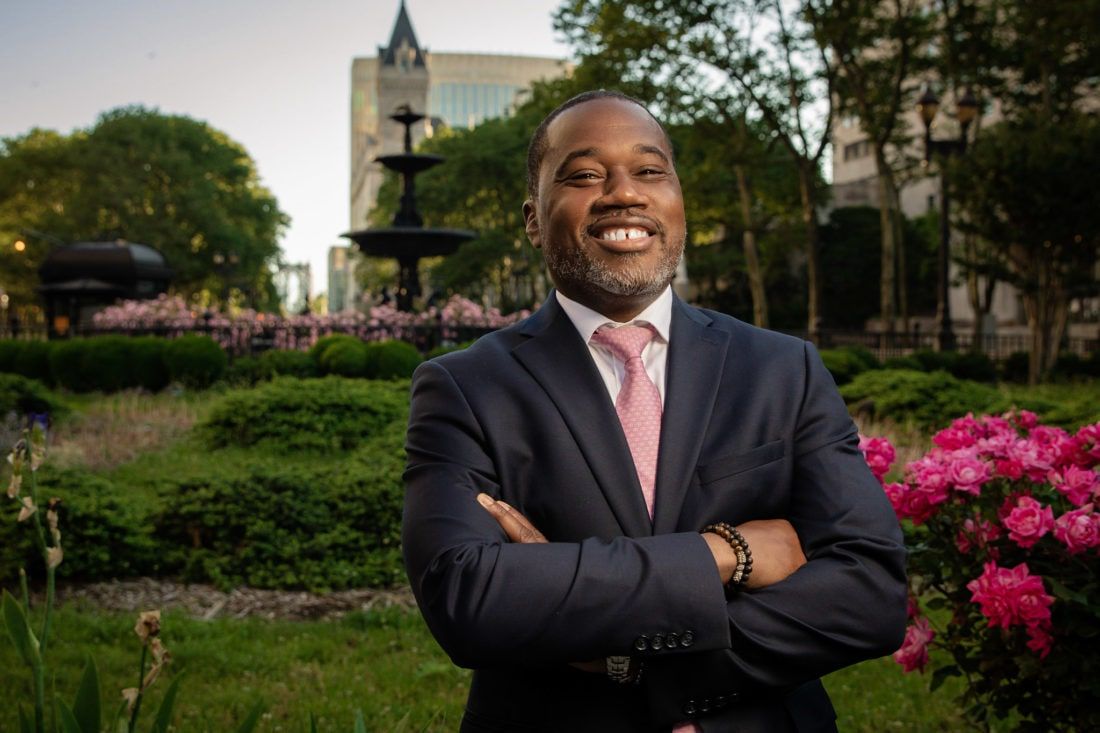Opinion: Unless we change what is affordable, Brooklyn will never solve the housing crisis


By Khari Edwards, candidate for Brooklyn Borough President
Let’s assume you are single, living in Bedford-Stuyvesant, and desperately in need of housing because your current building is slated for demolition to make way for new construction. Your income from working full-time at a nonprofit is $35,000 per year. At a building like the newly constructed Garnet House on Fulton Street, hailed as a step forward in affordable housing, your income only qualifies you for 15 of the 103 units available. Why? Because only 15% of units are dedicated to meeting the needs of your income, while nearly 40% of the units are dedicated to those making more than twice what you make in a year. This scenario is not unfamiliar to anyone looking for affordable housing in New York City.
Our city has a longstanding and well-documented affordable housing crisis that has been exacerbated by the pandemic. Areas hardest hit by COVID are facing eviction rates at four times the normal rate with parts of Crown Heights and Prospect Lefferts Garden having the highest numbers of eviction filings in Brooklyn.
As a lifelong Brooklynite, I have seen countless elected officials try to solve the affordable housing crisis with incentives for developers, rezonings, and increasing density, but until we change the metrics used to define what is affordable, we will continue to have residents not able to afford new apartments going up around them that are supposed to be affordable.
To determine what affordable housing units should be renting for, the city uses Area Median Income (AMI), a calculation that comes from the U.S. Department of Housing and Urban Development (HUD). The problem is that to get this figure, HUD adds up incomes from throughout a metropolitan area. In New York, this means they add the median incomes in each of the five boroughs along with wealthier Westchester, Rockland, and Putnam counties. This skews the data since according to census data in 2019 dollars, Putnam has a 73% higher median household income than Brooklyn, Westchester is 60% higher, and Rockland is 54% higher.
To make rents even less affordable, the AMI for a three-person family in the New York City metropolitan area increased during the pandemic from $102,000 in 2020 to $107,400 in 2021. AMI increased despite high unemployment and the likelihood that the economy won’t fully recover until 2024. HUD decided to go ahead with raising the AMI even though data shows that 70% of extremely low-income renter households had a severe cost burden.
To fix the problem, federal legislation must be passed that requires eligibility for affordable housing projects to be calculated using the median income of the zip code where the building sits. Technically this change would have to come through Congress but there have also been New York state bills introduced by Senator Gianaris and Assemblymember Barnwell, both of Queens, to implement this reform. We need all of our elected officials at the city, state, and federal levels to put aside their differences and pass a bill or sign an executive order to make this change a reality.
While AMI reform is long overdue, it is even more timely given the pandemic. As we seek to fully reopen and revive New York’s economy, changing how we calculate rents for affordable housing would go a long way towards giving people the truly affordable housing they rightfully deserve.
Khari Edwards (@KhariOEdwards), a candidate for Brooklyn Borough President, is the former Director of External Affairs at Brookdale University Hospital Medical Center in Brownsville




